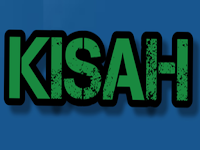Custom Robots Header Tags Settings In Blogger

Blogger Custom Robots Header Tags Setting - To Rank In Search Engines!
Have you ever wondered how search engines rank your posts? And have you ever heard of a search engine robot? If not then this post is going to be very important for you and your Google blogger. In this post, we will understand what settings you need to do in the custom robots header tags of your Blogspot blog in order to rank in search engine crawlers and search engines like Google, Bing, Yahoo, DuckDuckGo, and others.
These search engine's robots keep on crawling your blog regularly based on custom robots header tags. Therefore, it is imperative to set custom robots header tags to make your blog visible in search engines. Once you have set up your blog's custom robot header tag, you no longer need to go to the search engine webmaster tools to get your blog posts indexed. It automatically crawls your blog regularly and indexes all your posts, pages, and other media files.
Before setting up custom robot header tags, let's first understand what these tags are and their uses.
Custom Robots Header Tags And Their Usages
There are many custom robot header tags available in the Blogspot blog and it is very important to know them individually.
Let's know them one by one...
1. all
The all header tag allows search crawlers to crawl your blog and index the available content without any limitation.
2. noindex
As the name suggests the noindex header tag is used when you do not want any particular content to be indexed. Example: Let's say you are running an eCommerce site and you do not want to index the available offers on items as the offers are available for a certain period of time which is not permanent.
3. nofollow
Before getting to know the nofollow header tag, you should know the dofollow header tag. Actually, dofollow and nofollow tags are used for outbound links. If you place an outbound link on your site without a tag, by default it will be considered dofollow and search robots will go through the link, but if you don't want search robots to see your outbound link, use the nofollow tag.
nofollow: <a href="https://exmple.com" rel="nofollow">nofollow Example</a>
Dofollow: <a href="https://exmple.com" rel="dofollow">dofollow Example</a>
OR
<a href="https://exmple.com">dofollow Example</a>
4. none:
The none tag combines the nofollow and noindex properties of both tags. Using the none tag prevents your content from being viewed by search engines as well as your links in search engines.
5. noarchive
This tag instructs Google that a cached copy of your page should not be stored on its servers. Cache copy is a copy that Google creates while crawling your page and saves as a backup in case your current page goes down.
6. nosnippet:
Snippets are small chunks of text that appear on a webpage. If you don't want a snippet to appear on a specific page, use the nosnippet tag instead.
7. noodp
Demos, or the Open Directory Project, is a massive directory of links to other websites. The noodp tag instructs Google not to utilize those directories' titles and descriptions. However, as of 2017, the Open Directory Project has come to an end.
8. notranslate:
A large number of web pages are converted into search engine results. If you wish to block translations on your website, use the notranslate tag.
9. noimageindex:
Search engines will de-index images on the search engine results page if this tag is used. Images can bring more organic traffic than content, therefore you should use them appropriately.
10. unavailable_after:
When the tag is set, Googlebot knows when to cease crawling and indexing a website. When a webpage provides promotional material, this tag might be used (offer valid for a certain period).
This collection of tags is quite useful for applying bespoke robot header tags in Blogger.
How to Setup Custom Robots Header Tags in Blogger?
So far we discussed all 10 tags available in Google's Blogger in detail. Now see how to set them in Google Blogger step-by-step:
STEP1: Open Blogger and log in to your Blogger's dashboard. If you are new to blogger and don't know how to set up refer to our blogger guide. Select the blog in which you want to set Custom Robots Header Tags.
STEP2: Next go to Setting -> scroll down to Crawlers and indexing -> Enable Custom Robots Header Tags > Under Custom Robots Header Tags you will find three options 1) Home page tags, 2)Archive and search page tags, and 3)Post and page tags.
STEP3: Click on Home page tags and set up your fields as shown in the figure below! i.e. Enable only two fields one all and second noodp and hit save changes.

STEP4: Now click on Archive and search page tags and again enable two tags 1) noindex, and 2) noodp and click on save changes. For your reference, you can see the picture below.

STEP5: Now click on the third option posts and pages tags and enable two tags 1) all, and noodp and click on save changes as shown in the picture below:

And now finally you are done setting up your blogger custom robot header tag.
Conclusion: Custom Robots Header Tags Settings In Blogger
Finally, I explained all the custom robot header tags in detail and guided you on how to set up all the three options available in blogger i.e. home page tag setting, archive and search page tag setting, and post and page tag settings. I hope you have understood well these tags and their uses but still, you have any query regarding it, let me know in the comment or mail me at karunasingh@blogearns.com

